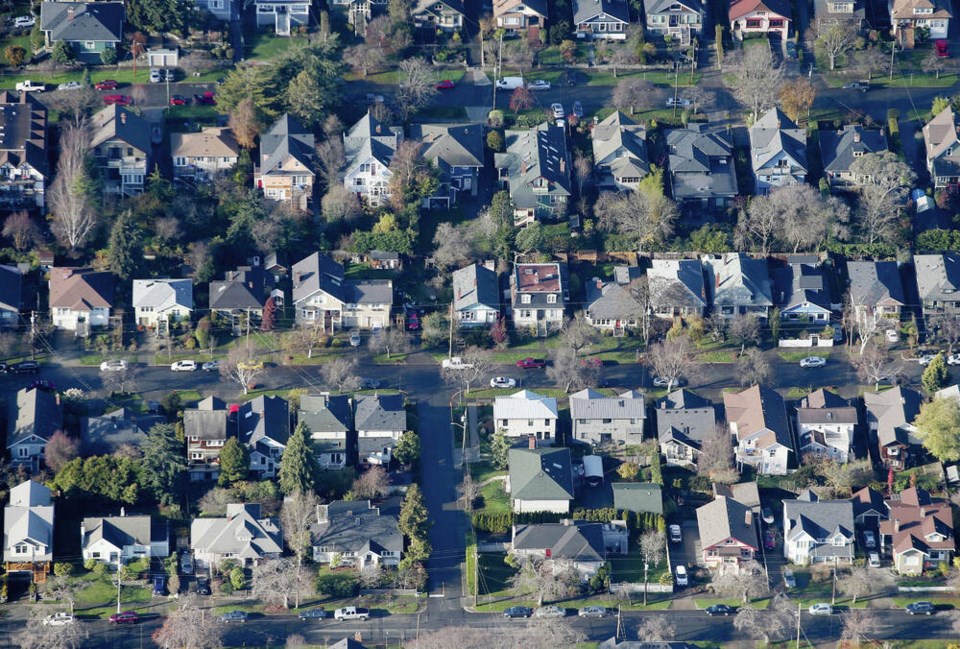Feb. 9 marked the release of the first tranche of data from the 2021 census. This first release provided data on total population and housing counts across sa国际传媒 and a glimpse into how our communities have been growing.
Based on these high-level data, a narrative has begun to emerge in sa国际传媒 and some of our regions that because the housing stock expanded at a quicker pace than population that this is incontrovertible evidence that our communities are not facing a housing supply crisis.
Using these simple growth metrics to dismiss issues of housing supply at best illustrates a misunderstanding of our housing system, and at worst diminishes the real challenges British Columbians have been experiencing in finding suitable and attainable housing.
This misunderstanding is premised on the notion that the housing market is in relative balance if total housing growth moves in lockstep with population as communities are adding enough supply to meet housing need.
History shows us why this is a false premise and a misrepresentation of our housing situation; while housing certainly needs to expand to accommodate more people, it also needs to expand to accommodate the changing needs of those who are already here.
Interestingly, if we dive into the past 50 years of Census data, we see that the stock of occupied housing has always grown more quickly than total population. This difference was most significant during the late ’70s and early ’80s.
From 1971 to 1976, the provinces’ occupied housing stock grew by 24% while its total population grew by almost half that rate (13%). Similarly, between1976 and 1981, housing expanded by 20% in the face of a population that grew by only 11%.
The following three decades saw the difference decline, with the most recent census period (2016 to 2021) showing a provincial occupied housing stock that grew by 8.5% versus a population that grew by 7.6%.
So what was the driving factor behind the rapid growth in housing relative to population in the 1970s and early 1980s? It was changes in the composition of our population (and not growth) that drove the housing stock to expand more rapidly than population.
Put simply, this was the period where the post-war boom generation aged out of the parental home and began to form households of their own. This means that while these kids were already here in the population (thereby not impacting overall population growth), they still needed additional housing to meet their needs as they moved out of the family home.
More specifically, while sa国际传媒’s total population grew by 13% between 1971 and 1976, the population aged 15 to 24 grew by 20%, and those aged 25 to 34 by 35%. This shifting demography was the driving force behind the 24% increase in sa国际传媒’s stock of occupied housing.
This process continued through the early 1980s: between 1976 and 1981 the provincial population grew by 11% as occupied housing expanded by 20%. Why? Because the 25-to- 34 and 35-to-44 age groups grew by 24% and 22% respectively.
When the longer history of housing completions in the province is brought into the conversation, the 1970s decade saw roughly 318,000 housing units completed in sa国际传媒, levels of housing development that have not been seen in the province since.
Even with the growing levels of housing starts over the past decade (and a much larger population), the most recent decade (2012-2021 at 310,000 completions) still falls short of what was added during the 1970s.
This reinforces the fact that the predominant driver to housing need is changes in the underlying composition of a population (demography). Given this, we cannot simply assert that because housing is growing more quickly than population that there is an adequate supply of housing to accommodate residents.
Now, what about the most recent census period? Unfortunately, we need to wait until later this year as we get more detailed demographic and housing data from the census to draw strong conclusions about household formation over the past five years.
With that said, the demography division at Statistics sa国际传媒 does produce annual estimates of population by age (as does our Provincial Statistical Agency, sa国际传媒 Stats). In the absence of age-specific data from the 2021 census, we can look to these other data sets for some insight.
Statistics sa国际传媒’s estimates show that between 2016 and 2021 sa国际传媒’s overall population grew by 7.3%, similar to the census counts. But over this period sa国际传媒’s population aged 35 to 39 grew by 20%, or at almost three times the rate of total population. Further to this, the 25 to 34 group also grew more rapidly than total population, expanding by 10%.
Similar to the late 1970s and early 1980s, another demographic bulge is moving into the family and household formation stage of the lifecycle in the province. While sa国际传媒’s post-war boom ages further into the retirement and empty ester stages of the lifecycle, their kids are aging into and through a period of household formation, albeit at a slightly later age than their parents.
Add to this that over the last two years we have also seen a greater inflow of migrants to the province, new residents who predominantly also fall into these young household formation age groups.
It could be argued that given the changes we are seeing in sa国际传媒’s demography, the small difference between overall housing and population growth over our recent history are yet a further indicator that we have significant supply-related issues within our housing system. Upcoming releases of more detailed age and housing data from the census will crystallize further our understanding of where the gaps are and the scale of the same.



